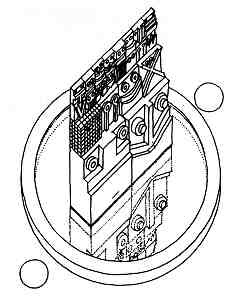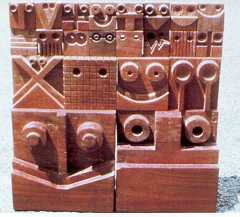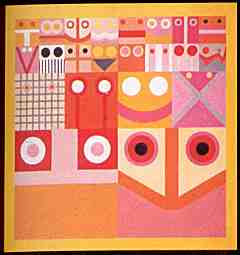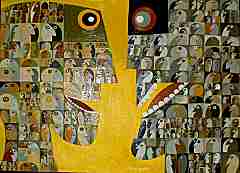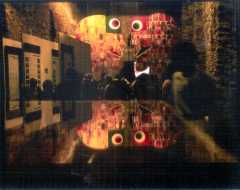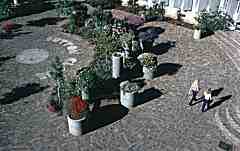VIGÉSIMO QUARTO LIVRO
THE PASSAGES, STEPS, PLACES, SQUARES AND MONUMENTS OF THE IMAGINARY CITY
The sidewalks of my childhood— those Portuguese black and white stone mosaic pavements which I have sometimes stood up as walls, were the beginning of my knowing how the city is to be transformed into a chain of delights.
When I first returned to Lisbon from Africa, aged six, the stepped streets, the lifts faked as horizontal trams and the noisy ringing real ones, the terraces and halls of the cake shops and cafés, the busy Rossio cluttered with fountains, with its huge me column, its adverts, its signs—(full of pigeons', and the enormous and flat Terreiro do Paço (immense after the narrow grid of Pombal's downtown), made me understand and love that city and live in it as if it were my own house.
|
The Wall of Glass Faces is a monument for Venice. Venice is the place of reflections glass and mirrors. The Wall of Glass Faces is a celebration of the flooded city. It is a public seat, a children 's paddling pool, the name of a place - The Square of Glass Faces - a sun clock, a light-fitting for a people's place. Except for the little face in tears, the skull and the cut-up face which will reveal themselves both ways, the back will be a blank glass wall of squares of varied sizes. The wall must be placed so that the faces look north for the sun to strike them from behind and laterally. At night the wall will have its own light. |
|
The Two Heads in Venice were sub-titled Two Representatives of the People in Confrontation over Each Other's Legitimacy. These two monumental heads represent the essence of democracy. It is a monument to a longed-for, weak and democratic government. It deals with matters of scale in quite a different way from the wall of glass faces. It belongs at the end of one of those narrow Venetian street corridors. It is to be positioned where the street widens onto a small square or opens onto a narrow canal and jumps over the water. I found such a place for it in my very hypothetlcal sketches for the Molino Stucky. The man, 1,73m tall, who gives scale to the drawings, is the patient lying down on all the beds in Corbusier's Hospital design for Venice. He is well now and has come to take a look at these goings on. |
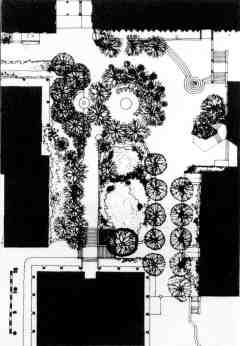 |
Sutton Close, University of the Witwatersrand, Johannesburg, RSA. |
It is not through rules, dogmas, dialectic somersaults and murder that the city will be returned to its citizens.
The city shall be made habitable again, only by the power of the imagination.
| HOME PAGE | CONTENTS PAGE | PREVIOUS PAGE | NEXT PAGE |
